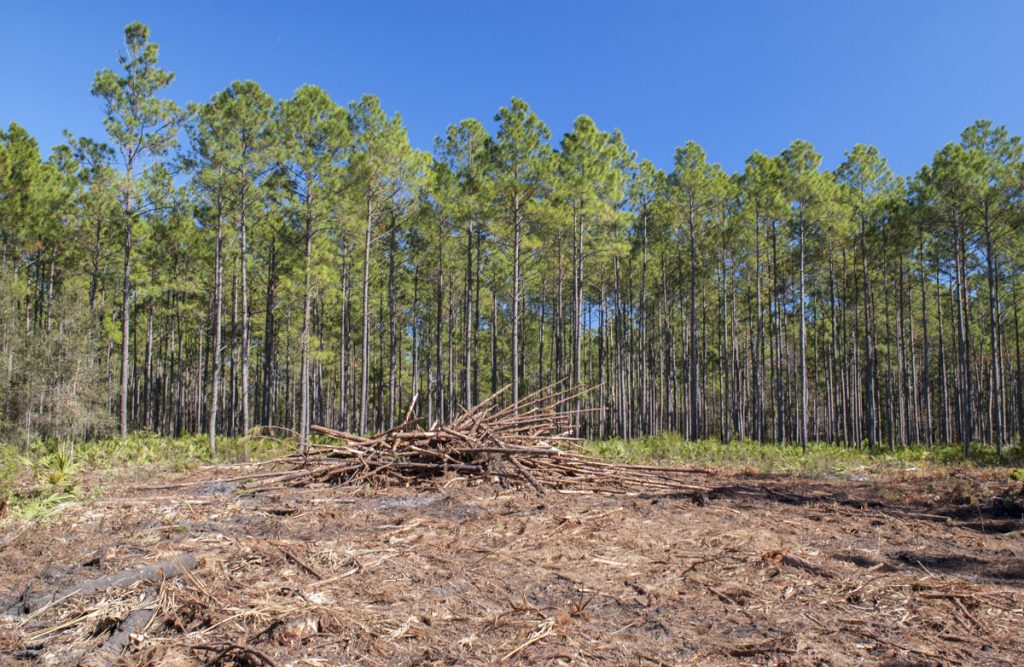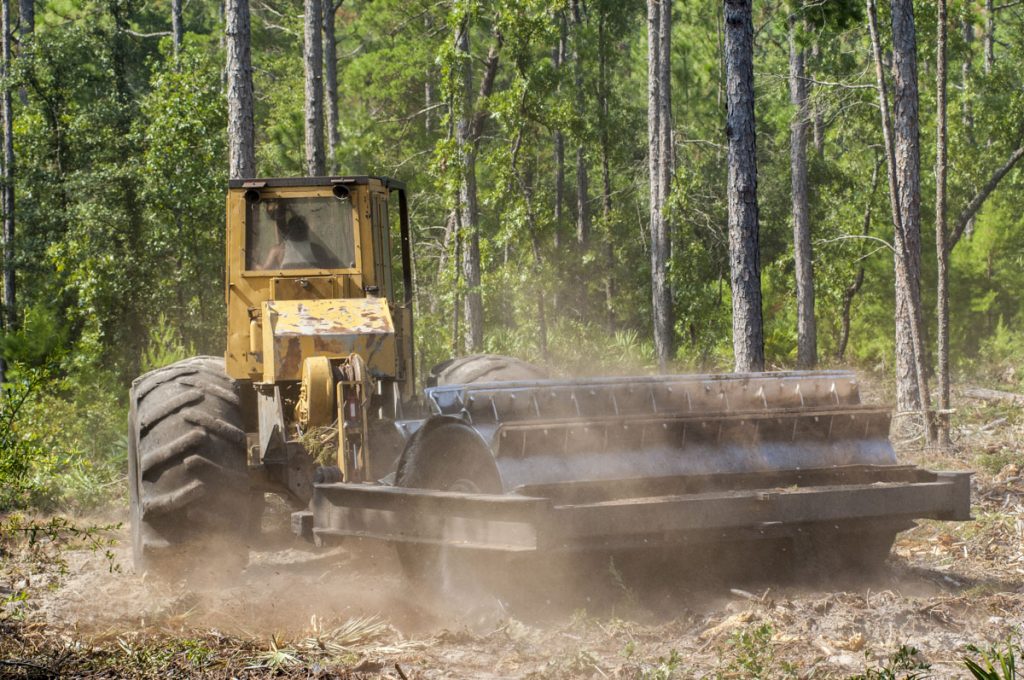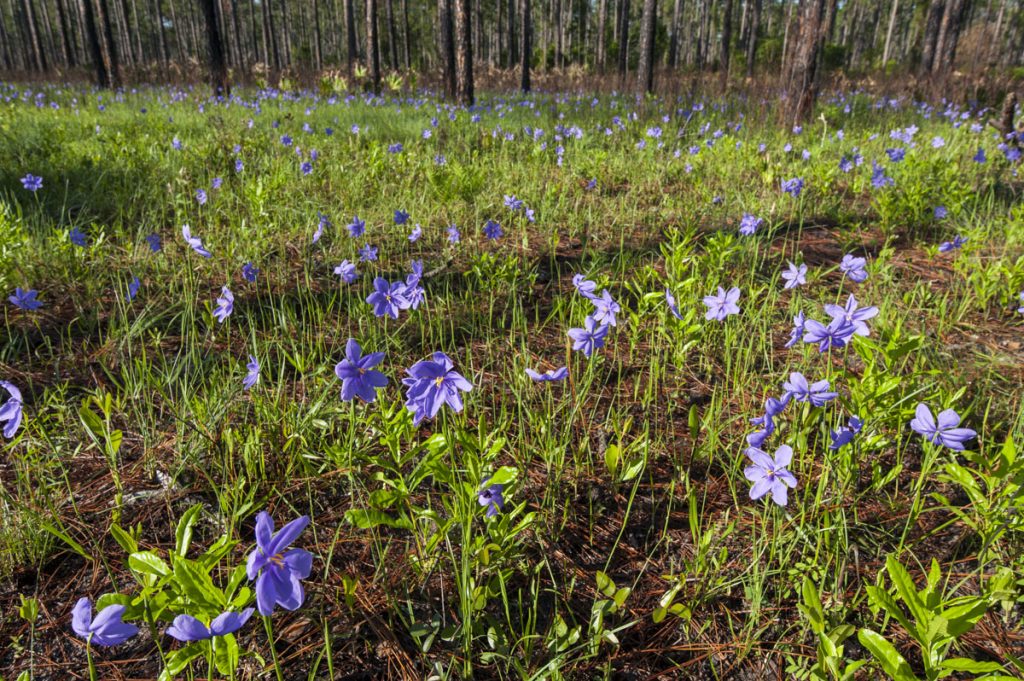St. Johns River Water Management district staff use a variety of techniques to manage, maintain and enhance natural ecosystems on land owned and managed by the district. The district is responsible for ensuring that these public lands are managed to restore and protect water resources and their natural conditions while providing opportunities for public access and recreation when appropriate.
Many of Florida’s natural communities were shaped by frequent fire and other natural cycles such as periods of wet and dry conditions. With the increasing absence of fire in the landscape, altered hydrology, and frequent and extended drought conditions, natural communities change, often becoming overgrown with undesirable vegetation. Without management, these changes may result in the loss of diversity and become inhospitable to the many plants and animals living in conservation areas.
While the district frequently uses prescribed fire to address habitat changes, other management techniques are also used by land managers to improve the structure and composition of an area’s vegetation. Mechanical treatments used by the district include roller-chopping, mowing and harvesting. These treatments may be used in conjunction with other techniques such as prescribed fire or herbicide or they may be utilized individually in the absence of fire. Restoration and management activities are prescribed for individual parcels to meet specific objectives and are included in the property’s adopted land management plan.
When mechanical treatments are conducted on district lands, visitors will initially observe a landscape that appears drastically altered. Observations may include large areas of mowed or chopped vegetation or areas of forest where trees have been harvested. Over time, visitors will see a rejuvenation of the landscape, which will often include increased plant diversity, improved ecosystem health, and frequently, an improved vista.


Roller-chopping
Roller-chopping is a relatively low-cost mechanical treatment that includes a tractor pulling a heavy metal drum with protruding cutting edges across vegetation. Roller-chopping pushes down and chops up shrubs and small trees and is used by the district to accomplish several land management objectives, including:
- Site preparation to facilitate prescribed burning, which reduces fuel and the potential risk of devastating wildfires
- Site preparation to facilitate seeding or natural regeneration of pine in harvested areas
- Restoration and perpetuation of herbaceous groundcover
- Habitat restoration for species such as the Florida Scrub jay
Mowing
Mowing is a mechanical treatment where a variety of mowing implements are used to manage herbaceous groundcover and small shrubs. In addition to maintaining trails and roads by mowing, the district sometimes mows large areas of vegetation to achieve various land management objectives such as:
- The restoration, recovery and perpetuation of desirable herbaceous species and other groundcover
- The reduction of shrubby fuels to reduce the potential for devastating wildfires and to facilitate prescribed burning
- Habitat restoration and management for species such as the gopher tortoise

Harvesting
In commercial forest settings, tree harvesting is generally an economic endeavor. The district harvests trees primarily for ecological reasons. The district uses several harvest methods, including salvage harvests, thinning and occasionally clear cutting.
- Salvage harvests are conducted to remove trees that have been damaged or killed. Most frequently, the district conducts salvage harvests in response to mortality from wildfire, flooding, wind, tree disease and insect infestation.
- Thinning is a forest management practice that includes selectively removing trees from an area. Thinning operations at the district are conducted with the goal of improving groundcover diversity and wildlife habitat while increasing the growth and health of the remaining trees.
- Clear cutting is the removal of all trees from an area and is not commonly used at the district. If used, the district typically uses the technique to aid in the control of insects or disease, or to accomplish a species conversion (removing an undesirable species and replanting the site with one that is appropriate for the habitat). In sand pine areas, clear cutting may be utilized to accomplish a species conversion or as a means to manage the stand of trees.

